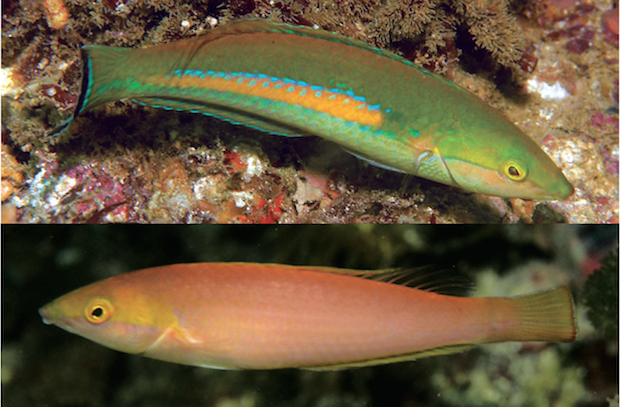The genus Pseudojuloides constitutes a collection of fusiform torpedo shaped wrasses with chisel like incisiform teeth that are more often found living in lose sandy rubble instead of the usual coral cover. Pseudojuloides was last revised in 1981 where five new species were added to the original three. Since then, the genus has been growing steadily with the description of Pseudojuloides kaleidos, P. severnsi and P. edwardi in 1995, 2000 and 2014 respectively. The genus at this current date holds twelve described members, and a handful of other known unknowns awaiting scientific analysis and description. It is with certainty that Pseudojuloides will continue to expand in size as it did most recently, with P. polackorum being the twelfth official member of the genus.

Like the previous new species Pseudojuloides edwardi, P. polackorum is native to Africa, more specifically near the southern coast. It ranges to Kenya as well as Madagascar, but is replaced by Pseudojuloides xanthomos in Mauritius. P. polackorum is unique in being one of few species that is more well known in the trade than in the wild before official scientific description. Although very uncommon, it does make its sporadic appearance via African imports, such as the one above in Japan. Jason Edward of Greenwich Aquarium has also been very instrumental in the procurement of specimens via aquarium imports for the official description.

The males of this species resemble P. cerasinus, but differ in having a wide lateral orange midline that extends horizontally starting past the pectoral fins. The stripe is bounded by blue which on the upper portion, often extends linearly into the orange forming a zipper pattern. The body is emerald fading to a lighter shade ventrally, and the lower portion of the face is salmon washed. The tail bears a black margin edged in blue. Females like many others in the genus, are uniformly salmon pink with yellow washing on the head and the median fins.

This species is another member of the cerasinus complex, but differs greatly in coloration as well as mitochondrial DNA barcode sequences. As mentioned above, this species ranges in the South Western Indian Ocean along the Southern African coast to Kenya and north to Madagascar. In the oceanic islands such as Mauritius, it is replaced by P. xanthomos, which bears a superficial resemblance except that the orange lateral band is reduced to a yellow epaulette behind the pectoral fin.
Pseudojuloides polackorum was named in honour of Dennis and Sally Polack, whose underwater photos first brought this species to attention. The specific epithet “polackorum” in this case is used as a noun in the genitive case. For more information and the full paper, this species description is published in the Journal of the Ocean Science Foundation, volume 14.



